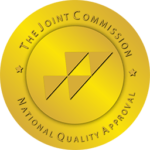In the realm of prescription medication, caution is paramount, especially when considering combining drugs. A prevalent query in this domain is the compatibility of Xanax, a common benzodiazepine, with tramadol, an opioid pain reliever. Both drugs, widely prescribed in the United States, have distinct mechanisms and side effects, raising concerns about their concurrent use.
Understanding Xanax
Xanax, with its generic name alprazolam, is a widely prescribed medication within the benzodiazepine class, primarily used for treating anxiety and panic disorders. Its popularity stems from its effectiveness in reducing symptoms of anxiety by targeting specific receptors in the brain.
Xanax functions by attaching to gamma-aminobutyric acid (GABA) receptors in the brain. GABA, an essential amino acid, serves as the primary inhibitory neurotransmitter in the central nervous system. This interaction facilitates the increase of GABA activity, which in turn helps calm nerve activity, leading to a reduction in anxiety symptoms. This mechanism highlights the drug’s role in balancing neural activity, particularly in brain regions like the hippocampus, thalamus, and hypothalamus, which are involved in emotional regulation.
Xanax’s Effects on the Brain and Body
The drug’s action results in a calming effect on the brain, which can be a relief for those suffering from anxiety and panic attacks. However, this calming effect also accounts for many of the drug’s side effects. The most common include:
- Drowsiness and sedation: Making patients feel sleepy or lethargic.
- Dizziness and lightheadedness: Affecting balance and coordination.
- Fatigue: This leads to a general feeling of tiredness.
- Depression: In some cases, it can worsen or trigger depressive symptoms.
- Confusion and impaired coordination: Affecting cognitive functions and physical movements.
- Other effects: Other effects can range from headaches, insomnia, nervousness, and fainting to more severe issues like memory problems, muscle twitching, chest pain, and hyperventilation.
The severity and occurrence of these side effects can vary greatly among individuals. Factors such as the dosage taken, the duration of use, and an individual’s tolerance and sensitivity to Xanax play a significant role. It’s essential for users to closely monitor their response to the medication and report any adverse effects to their healthcare provider.
Xanax Addiction and Dependence
While Xanax is effective for short-term relief of anxiety symptoms, concerns arise with long-term use. Dependence, tolerance, and potential for misuse are significant issues. Over time, the brain may become less responsive to the drug, necessitating higher doses to achieve the same effect, which can escalate the risk of addiction.
Xanax, as a benzodiazepine, offers significant benefits for anxiety and panic disorders, but its use requires careful monitoring and understanding due to its side effects and potential for dependence. It is a powerful tool for managing anxiety but must be used judiciously and under strict medical supervision to mitigate risks and ensure patient safety.
Understanding Tramadol
Tramadol, known by brand names such as Ultram and ConZip, is an integral part of pain management in medical practice. As an opioid analgesic, its primary role is to alleviate moderate to severe pain, distinguishing it from other pain relievers due to its unique properties and potential risks.
Tramadol’s effectiveness in pain relief lies in its action as a central nervous system depressant. It operates by binding to opioid receptors located in the brain, spinal cord, and gastrointestinal tract. These receptors are critical in transmitting the sensation of pain throughout the body. By attaching to these receptors, tramadol blocks the pain signals, providing relief to the patient. This mechanism not only reduces the perception of pain but can also create a sense of well-being, which contributes to its potential for misuse.
Side Effects of Tramadol
As a central nervous system depressant, tramadol slows down brain activity. This action helps in reducing pain but also leads to several side effects. Common side effects include:
- Altered Cognitive Function: Patients may experience changes in cognition, including confusion or difficulty concentrating.
- Mood Changes: Emotional instability, such as mood swings or a feeling of euphoria, can occur, reflecting the drug’s impact on the brain’s reward pathways.
- Gastrointestinal Distress: Issues like nausea, constipation, or stomach discomfort are common, as tramadol affects the gastrointestinal system.
- Sleep Disturbances: This could manifest as trouble falling asleep, staying asleep, or experiencing restless sleep.
- Motor Skill Impairment: Coordination and physical abilities may be affected, leading to a risk of falls or accidents.
- Respiratory Changes: In some cases, tramadol can lead to slowed breathing or irregular respiratory patterns.
These side effects highlight the need for careful monitoring when using tramadol, especially in patients with a history of substance misuse or certain medical conditions.
Tramadol Addiction and Dependence
One of the critical concerns with tramadol is its potential for addiction and dependence. Opioids, in general, have a high risk of abuse, and tramadol is no exception. Even when taken as prescribed, individuals can develop a physical dependence on the drug, meaning they might experience withdrawal symptoms if the medication is abruptly stopped. The risk of addiction is particularly high because of the way tramadol interacts with the brain’s reward pathways, potentially leading to misuse.
Tramadol’s role in pain management must be understood in the context of the broader opioid epidemic. Since the 1990s, the increase in prescription opioid abuse has led to a significant public health crisis. Tramadol, as part of this drug class, contributes to the challenges faced in balancing effective pain management with the risk of addiction.
For those prescribed tramadol, it is essential to use the medication strictly as directed by a healthcare provider. Patients should be aware of the signs of addiction and communicate any concerns with their doctor. Regular follow-ups and careful monitoring can help mitigate the risks associated with tramadol use.
While tramadol is an effective pain reliever, its role in patient care is complex due to its impact on the central nervous system and the inherent risks of addiction and dependence. Its prescription and use require a thoughtful, well-monitored approach, keeping patient safety and public health considerations at the forefront.
The Risks of Mixing Xanax and Tramadol
The combination of Xanax and tramadol, both central nervous system depressants, poses significant health risks. Understanding the dangers of mixing these medications is crucial for patient safety and effective treatment.
Exacerbated Central Nervous System Depression
The primary concern with combining Xanax and tramadol is the intensified depressive effect on the central nervous system (CNS). Both drugs independently decrease CNS activity, leading to sedation and reduced anxiety (in the case of Xanax) and pain sensation (in the case of tramadol). When taken together, these effects are not just additive but can be synergistic, leading to an excessive and potentially dangerous level of CNS depression.
Potential Consequences of Combined Use
The combined use of these drugs can lead to severe outcomes, including:
- Extreme Sedation and Drowsiness: This can impair a person’s ability to perform daily activities and increase the risk of accidents.
- Respiratory Depression: A significant reduction in the respiratory rate can lead to insufficient oxygen supply to the body, a potentially life-threatening condition.
- Unresponsiveness and Coma: In severe cases, the combined drug effect can lead to a coma-like state, where an individual is unresponsive to external stimuli.
- Increased Risk of Overdose: The synergistic effects can lead to an overdose, even if the individual doses of each drug are within prescribed limits.
Addiction and Tolerance Concerns
Both Xanax and tramadol have the potential for addiction and tolerance. When used together, the risk of developing dependence on these substances increases. Over time, the body may require higher doses to achieve the same effects, leading to a dangerous cycle of misuse and higher overdose risk.
Danger of Unsupervised Use
Self-medication or unsupervised use of these drugs can be particularly hazardous. Without proper medical guidance, individuals may unknowingly consume dangerous combinations, leading to acute health emergencies.
Importance of Medical Supervision
In some cases, healthcare professionals may prescribe both medications together for specific, closely monitored treatment regimens. However, this is done under strict medical supervision, with careful consideration of the patient’s health history and current condition. It’s crucial for patients to follow their doctor’s guidance and not alter dosages or combine medications without consultation.
Awareness and Education
Patients prescribed either Xanax, tramadol, or both should be educated about the risks of combining these drugs. This awareness can prevent accidental misuse and encourage patients to seek medical advice before making any changes to their medication regimen.
While Xanax and tramadol are effective in their respective therapeutic roles, their combination can be dangerous. Understanding the risks associated with mixing these medications is vital for both healthcare providers and patients to prevent severe health complications, including overdose, addiction, and potentially life-threatening respiratory depression.
Overdose and Addiction Concerns
The overdose risks are heightened when both depressants are used together. They can overwhelm the body’s processing ability, leading to a critical slowing of vital functions like breathing and heart rate. Moreover, benzos like Xanax can amplify the strength of opioids like tramadol, escalating the danger of fatal overdoses and long-term addiction, especially in cases of misuse or recreational use.
Questions about drug interactions, such as the compatibility of Xanax and tramadol, should always be directed to healthcare professionals. Patients should be vigilant about potential interactions to avoid dire consequences like addiction or fatal overdose. If dependency on these medications arises, professional treatment options are available to address prescription drug addiction.
Finding Help with True Self Recovery
For individuals struggling with dependence on benzodiazepines like Xanax, opioids like tramadol, or both, True Self Recovery offers a beacon of hope. As a dedicated drug and alcohol addiction treatment center, we specialize in helping people reclaim their lives from the grip of addiction.
At True Self Recovery, we understand that addiction is a complex condition requiring a multifaceted treatment approach. Our center provides comprehensive care that addresses not only the physical aspects of addiction but also the emotional and psychological factors. We offer personalized treatment plans tailored to meet the unique needs of each individual, ensuring the best chance for a successful recovery.
Our team of experienced professionals is committed to providing compassionate and expert care. We understand the challenges faced by individuals dependent on benzodiazepines and opioids and are equipped to offer the support, guidance, and medical attention needed to overcome addiction. Our approach is grounded in evidence-based practices, ensuring that our clients receive the most effective treatment.
Recovery is a journey that requires a safe and supportive environment. At True Self Recovery, we provide a nurturing space where individuals can focus on healing and growth. Our facilities are designed to offer comfort and peace, essential for the recovery process.
If you or a loved one is struggling with addiction to benzodiazepines, opioids, or any other substance, remember that help is available. True Self Recovery is here to support you every step of the way. Reaching out for help is the first and most crucial step towards recovery.
Don’t let addiction control your life or the life of someone you care about. Contact True Self Recovery today to learn more about our programs and how we can help you or your loved one embark on the path to a healthier, substance-free life.



